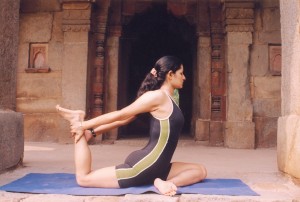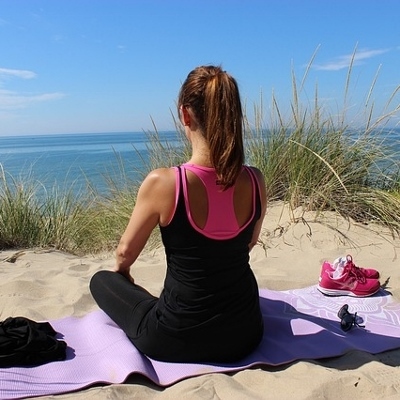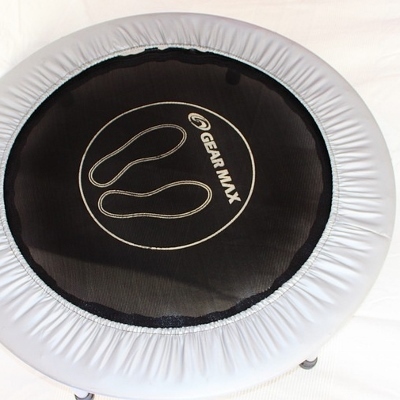 These tips for a strong back are courtesy of Denise Druce, a registered yoga teacher who holds a Master’s Degree in Public Health.
These tips for a strong back are courtesy of Denise Druce, a registered yoga teacher who holds a Master’s Degree in Public Health.
It’s estimated that approximately 31 million Americans experience low-back pain at any given time (1). Experts estimate that as many as 80% of the US population will experience a back problem at some time in our lives (2).
Yoga has been used for thousands of years to bring about health and vitality, to strengthen muscles, and to calm the mind. Many doctors now recommend yoga as a way of improving back health, and I couldn’t agree more. I was diagnosed with a pretty serious bulging disc last year, and through thoughtful and careful yoga practice, my “back is back.â€
Here are some things to keep in mind as you give your back some Yoga Love:
1) Posture and alignment are key to a strong spine. Americans spend far too much time sitting, and eventually, our spines get tired of being rounded forward. Your spine has three natural curves – one inward curve at the neck, one outward curve in the upper back, and one inward curve in the lower back. Good alignment means a tall spine with all of its curves in their natural, or neutral position. Practice good alignment by sitting or standing as if an invisible string was lifting you up from the top of your head.
2) Your spine loves to move. It can flex forward, extend backward, bend laterally, and it can rotate. Yoga gives you many opportunities to move in all of these directions. Always begin with good alignment, a long spine, and then move slowly in all of these directions. Back off if you feel any pain.
3)Â Your spine needs support. Think about it. There is really no bony structure between your ribs and your pelvis, which means that about 6 inches of your spine is just hanging out with nothing to support it but muscle. Yoga helps to improve muscular strength in the torso. After you lift to a tall spine, engage all of your core muscles as if you had a wide belt cinching around you. Draw up on the muscles of the pelvic floor. Then move into your next posture.
4) Work on core strength every chance you get. Lifting something heavy? Engage your core in the way described above. Pushing a shopping cart? Engage your core. Stopped at a red light? Engage your core. Soon, those muscles will know to stay in that strong supportive place all the time.
5)Â Yoga helps improve back flexibility. In everyday life, your back muscles are mostly working to pull you back into an upright position. They are always working and tense. Yoga allows these muscles to relax. When stretching your back, make sure to get into a position where you can relax and feel supported, not hanging out and making the muscles work to hold you there.
6) Don’t forget the legs. The muscles in the back of the legs (known as the hamstrings) are a big factor in back pain. When our hamstrings are tight they pull on the back. And when we try to stretch them with a rounded back we can actually hurt our back more. ry this one. Lie on your back and bend one knee into your chest. Place a strap or belt around your foot and extend your leg up. Find a place to stretch with a completely straight leg. You may have to let the leg go out away from you a bit to do that, which is why you’re using the strap. Relax, breathe, and feel the length in the back of your leg.
7) Breathe. Your breath will tell you if you’ve gone too far. Listen to the sound of your breath, and feel it’s rhythm in every pose.  Breathe deeply but gently, clear down into the bottom of your lungs. and you will feel the breath expanding your back.
8) Avoid straining and forcing. If you feel pain, or if you notice that you’re grimacing or holding your breath, these are signs that you are outside of your safe and comfortable range. Your body will fight you at this point, and you will actually get less benefit, and you may be leaning toward an injury. Go to the point of being “comfortably uncomfortable†and you will see great gains over time.
9) Cat and Cow. This exercise is the favorite of physical therapists. It is done on all fours; alternate between rounding the spine (look under the body towards the legs) and lengthening the spine (lift sitting bones and look upwards). This one movement, done every day will give you better range of motion and more core strength.
10) Yoga off the Mat. You don’t have to be in a class in matching yoga clothes to get a stronger back. Practice these principles anytime you think about it. Lift up into a tall spine, brace your core muscles, and move through life strong and pain free.
1. Jensen M, Brant-Zawadzki M, Obuchowski N, et al. Magnetic Resonance Imaging of the Lumbar Spine in People Without Back Pain. N Engl J Med 1994; 331: 69-116.
2. Vallfors B. Acute, Subacute and Chronic Low Back Pain: Clinical Symptoms, Absenteeism and Working Environment. Scan J Rehab Med Suppl 1985; 11: 1-98.





